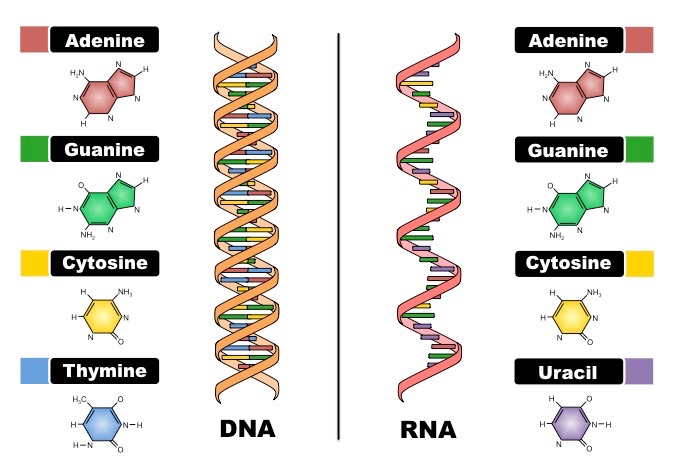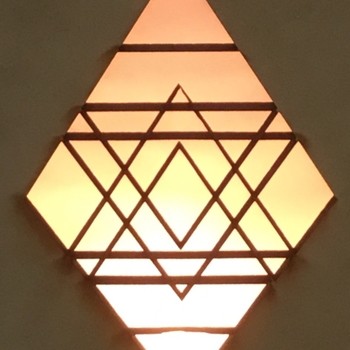What are the structure of RNA and DNA and how one might be used to create the other?
1 Answer
DNA is used as a template to make RNA.
Explanation:
DNA is a long polymer with deoxyriboses and phosphate backbone. It’s made from 4 different bases (nucleotides), adenine (A), thymine (T), guanine (G) and cytosine (C). But only adenine can only form a base pair with thymine and cytosine can only form a base pair with guanine.
RNA is a polymer with a ribose and phosphate backbone and with four different bases: adenine, guanine, cytosine, and uracil (U). Instead of pairing with thymine, adenine pairs with uracil.

The process of transcription transfers the cell’s genetic information from DNA to RNA. The goal of transcription is to make an RNA copy of a gene's DNA sequence.
The main enzyme involved in transcription is RNA polymerase, which uses a single-stranded DNA template to synthesize a complementary strand of messenger RNA (mRNA). RNA polymerase binds to a sequence of DNA called the promoter, found near the beginning of a gene. Once bound, RNA polymerase unzips the DNA strands. Then the RNA polymerase reads the DNA’s base pairs one pair at a time and creates the complementary mRNA strand needed for translation.
In the complementary strand, the mRNA strand will have A where the DNA has T; U where the DNA has A; G where the DNA has C; and C where the DNA has G. The mRNA carries the same information as the non-template (coding) strand of DNA , but it contains uracil instead of thymine.
 )
)
Hope this helps!


